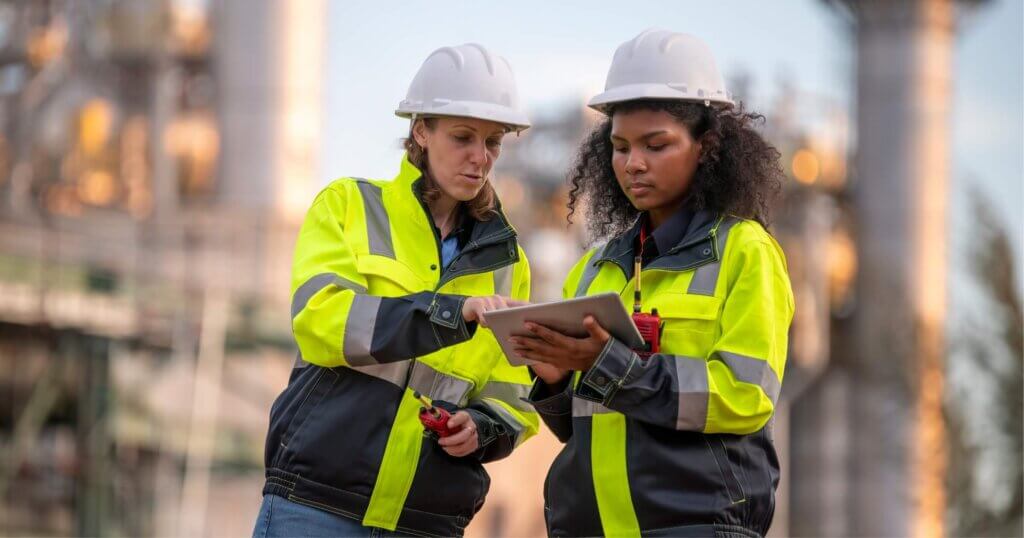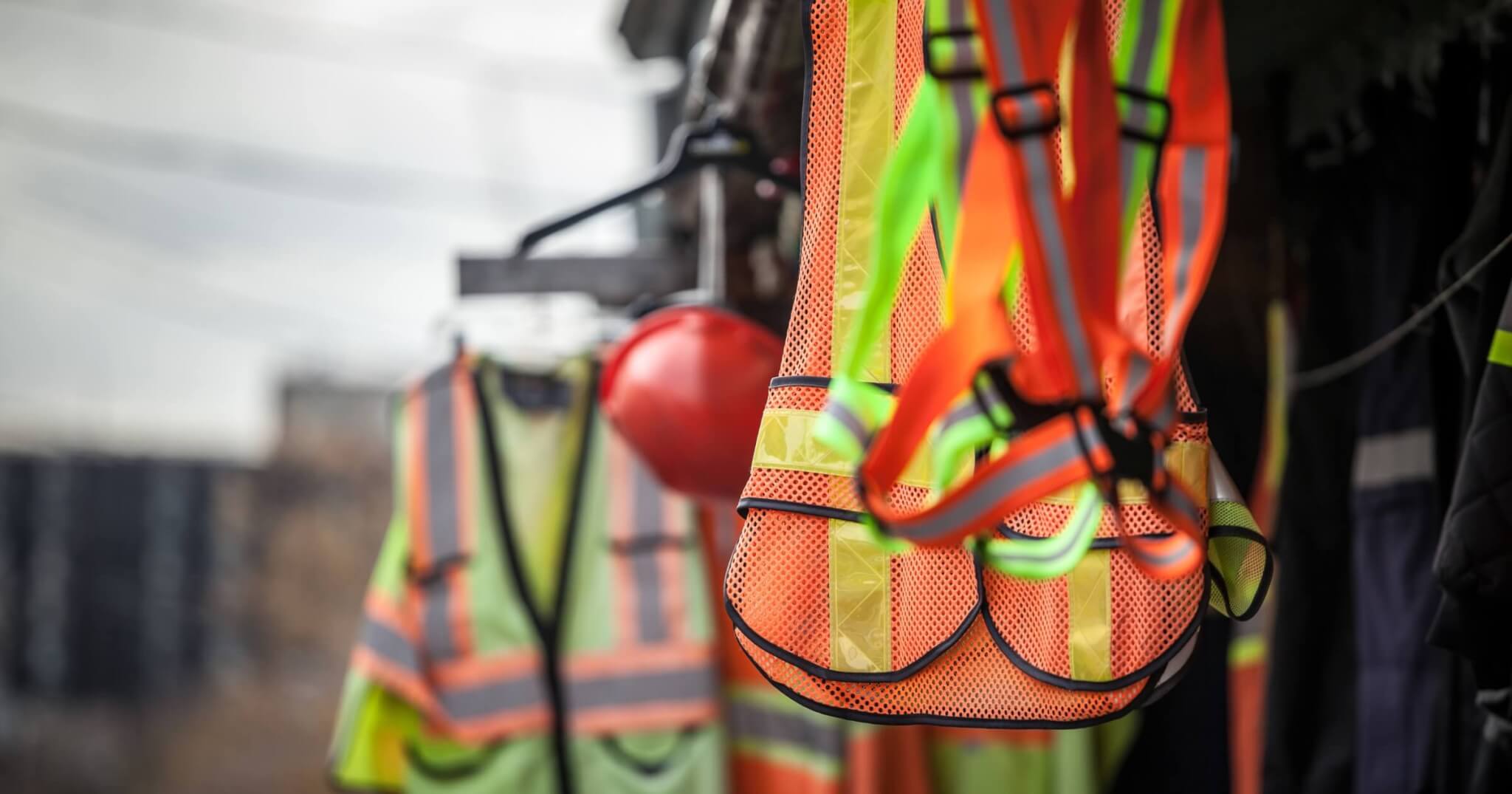If your boots are too big to walk in, your hard hat slips off constantly, and your harness hangs off your frame like a kid in adult gear, how safe can you really be? That’s the situation many tradeswomen face every day. Despite an increase in women entering the construction and engineering fields, many are still being given gear designed for men, often several sizes too large. Addressing PPE inequality comes down to listening to those affected, overhauling outdated procurement practices, and stocking gear that fits all bodies, not just the average male.
Quick look
- Nearly 60% of construction employers don’t stock PPE designed specifically for women.
- Ill-fitting gear increases safety risks, such as tripping, poor grip, and suspension injuries.
- Over two-thirds of women in the trades report struggling to find properly fitting safety gear.
- Outdated male-centered sizing data still guides most PPE design and procurement.
- Companies can address PPE inequality by updating inventory, involving women in gear trials, and formalizing fit-testing policies.
What is PPE inequality in construction?
PPE inequality in construction is the widespread failure to provide safety equipment that properly fits women and smaller-bodied workers. This includes common safety gear, such as gloves, helmets, boots, and fall protection systems, often designed with male-centric sizing, with limited accommodations for differences in body shape, stature, and fit.
The problem becomes especially clear with harnesses.
Most harnesses are cut for the average male torso, with a minimal adjustment range to accommodate differences in bust, hip, or shorter limb size. The result is uncomfortable and unsafe gear that doesn’t perform adequately in a fall for women on the job. The same goes for oversized gloves that reduce grip strength, or steel-toed boots that leave toes swimming. PPE inequality is a design failure that puts thousands of female workers at greater risk simply because the industry failed to plan for their presence.
How widespread is the problem?
PPE inequality is systemic and the numbers show it. A 2024 report by She Builds Nation found that 67% of women in construction struggle to find gear that fits properly, including high-risk items such as fall arrest systems, boots, and gloves. Another audit by the Considerate Constructors Scheme in the UK found that nearly 60% of employers do not even stock women-specific PPE.
This means women are often forced to make do with equipment that was never designed for them. They have to cut boot insoles, cinch vests with zip ties, or tape up glove fingers just to get through the day. And that’s for workers in roles ranging from electricians to project engineers, not just new hires or temporary staff. The data reflects a broken procurement system that fails to see women as part of the workforce.
Why the inequality persists

Photo courtesy of https://www.shutterstock.com/
Outdated sizing data
Most PPE gear is designed using body measurement data that’s decades old and male by default. The U.S. military’s anthropometric datasets from the 1950s and 1970s continue to inform many of the dimensions used in safety gear today. However, the average body has changed, and more importantly, the workforce has undergone significant changes.
Women now make up over 11% of the U.S. construction workforce, according to the Bureau of Labor Statistics. Continuing to design and stock gear around outdated male measurements keeps those workers invisible and unprotected.
Low representation on-site
When women are underrepresented in the trades, their needs are often overlooked in safety planning. Fewer women in leadership, safety committees, or procurement roles means fewer voices raising red flags about gear that doesn’t fit. Many women workers report being dismissed or ignored when they speak up about equipment issues, especially in male-dominated environments. Without direct input from the field, poor gear choices are repeated and the same faulty sizes are reordered year after year.
Budget and awareness gaps
Some companies assume women can just wear the smallest size available in standard men’s PPE. Others are aware of the problem but don’t prioritize fixing it because it’s viewed as a “special request.” Stocking a wider range of PPE sizes or maternity options may seem expensive up front, but it costs far more to deal with a serious injury caused by a poorly fitting harness or a trip hazard from baggy pants. And while gear manufacturers are starting to offer better options, too many companies still haven’t updated their supplier lists or ordering policies to reflect that.
Safety risks of ill-fitting PPE
Trip, entanglement, and fall risk from loose clothing or boots
PPE that hangs loose increases the odds of getting caught in machinery or snagged on rebar. Oversized pants drag and tear, creating trip hazards on stairs or scaffolds. Boots that are too big shift awkwardly, reducing ankle stability on uneven ground. These are just a few examples that can easily lead to preventable accidents on the job.
Reduced grip, impaired vision, and higher accident risk
Gloves that are too large make it harder to grip tools properly, especially when working at heights or handling sharp materials. One slip of a power drill or handsaw can mean serious injury.
Likewise, hard hats that sit too high or wobble out of place limit visibility and are more likely to fall off in active zones. They also offer less protection. Workers that cannot tighten their chin straps are therefore vulnerable during a fall or impact.
Increased potential for suspension injury from poor harness fit
Harnesses that don’t fit correctly can make suspension trauma worse. In a fall event, if the leg straps are too loose or positioned incorrectly due to a poor fit, the harness won’t distribute force properly. This can cause more severe injuries during a fall arrest. In women, chest straps placed too high or too low can also compress soft tissue painfully, leading to bruising or cracked ribs.
What construction companies can do
- Involve women in PPE trials before procurement: Invite women workers to test new equipment lines and give feedback. This helps identify real fit issues before placing bulk orders and builds trust by showing their input is valued.
- Stock women’s and maternity-specific harnesses, vests, boots, gloves, and helmets: Some workers need short-term accommodations during pregnancy, while others require better year-round sizing. Stocking the right gear reduces the risk of injury and helps retain skilled workers.
- Partner with vendors offering inclusive sizing: Collaborate with manufacturers that produce gear in a wide range of sizes and fits to ensure a more inclusive product offering. Request their sizing charts in advance and avoid one-size-fits-all packages.
- Create a formal PPE fit-testing policy: Just as respirator fit testing is required under OSHA rules, companies can establish policies that ensure fall gear and high-risk PPE fit properly before use.
- Track fit complaints and refresh inventory quarterly: Encourage workers to log issues in safety meetings or through anonymous feedback forms. Use that data to replace or expand your poorly fitting inventory.
- Include fit checks in onboarding and tool talks: Train new hires to recognize what a bad fit looks like and how to report it. Make it a regular topic so workers know it’s a priority, not a one-off issue.
- Create a “swap bin” for unused PPE sizes: Offer a return system that allows workers to exchange poorly fitting gear, rather than being stuck with it. It keeps more people in safer gear without waste.
- Assign a safety lead to monitor PPE equality: Having a specific person tasked with addressing PPE fit helps drive accountability and ensures consistency. It also sends a clear message that the issue is being taken seriously.
Key takeaways
PPE inequality is a major jobsite safety problem. Workers who can’t get gear that fits face higher risks, avoidable injuries, and a daily reminder that their needs weren’t part of the plan. Companies that fail to address this are missing a fundamental aspect of workplace safety: ensuring that every worker is protected from head to toe.
If you want more information on jobsite safety, check out our related pieces on OSHA’s new PPE rule, smart PPE innovations, and construction safety training.
Want more stories like this? We write about real issues workers face and what the industry can do better. Subscribe here to get our latest features straight to your inbox.



